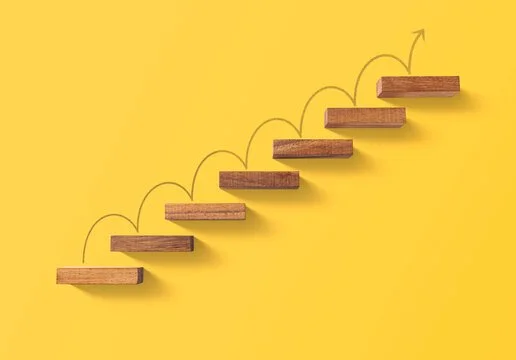New Year, Same Me!
/By Olivia Grossklaus, AMFT
While the idea of fresh starts and self-improvement is appealing as we move towards a new year, there’s often an underlying pressure to make resolutions that are big, bold, and transformative.
In the context of "New Year's resolution," a resolution refers to a commitment or decision made at the start of the new year to achieve a specific goal, improve a particular aspect of one's life, or adopt a new habit. However, the success of these resolutions can vary based on the clarity, feasibility, authenticity, and consistency of the goals set.
But why does creating resolutions at the New Year sometimes feel like such a daunting task?
Remaining Authentic
One of the biggest challenges of setting New Year's resolutions is the expectation of perfection. We often envision idealized versions of ourselves—someone who exercises every day, eats only healthy foods, reads a book a week, journals everyday etc. These goals are fantastic in theory, but they can quickly become overwhelming when we hold ourselves to an unrealistic standard that is likely misaligned with who we are authentically.
There’s also the tendency to compare ourselves to others. Social media can overwhelm us with success stories of people who have mastered the art of self-discipline or reinvented their lives “overnight”. This external pressure can make our own personal goals feel small, insignificant, or even unattainable. We feel like we "should" be doing more or achieving more, which only adds to the pressure and may cause us to veer further away from who we really are and what we really want.
Leave Room for Growth & Change
Setting resolutions is one thing; sticking to them over time may look entirely different. Life is unpredictable, and circumstances change. A goal that seemed achievable in the first few days of January can feel burdensome and irrelevant by February.
For many, this challenge is compounded by the fact that resolutions are often framed as all-or-nothing pursuits. If we slip up—whether it’s skipping a workout, missing a study session, or forgetting to journal a few days in a row —we feel like we’ve failed. This "black-and-white" thinking makes it harder to persevere when the going gets tough. The pressure to be perfect can lead to giving up entirely, rather than accepting that progress takes time and setbacks are normal. We as people grow and change over the course of the year, why can’t we allocate that same flexibility to our goals?
Wonderful Just The Way You Are
There’s an underlying cultural expectation that the New Year should be about self-improvement. Every year, we’re inundated with messages about becoming the "best version of yourself." This idea, while well-intentioned, often leads to feelings of inadequacy. It suggests that we’re not enough as we are and that we need to strive for constant improvement. This can leave us feeling like we’re perpetually "falling short" or never quite reaching our potential.
The focus on "better" also contributes to the fear of failure. If our resolution is about being more mindful, more successful, or more productive, it implies that the version of us before the New Year wasn’t good enough. The pressure to change, to be "better," can be exhausting and demotivating, especially if we don’t feel like we’ve made much progress.
Setting Mindful Resolutions
If the pressures of New Year’s resolutions feel overwhelming, it may help to reframe the way you approach them. Here are a few strategies to make resolutions feel less like a burden and more like an opportunity for growth:
1. Set Small, Manageable Goals: Break your resolutions into smaller, actionable steps. Focus on progress, not perfection. Small wins can add up over time, and they’re much more sustainable than trying to overhaul your entire life in one go.
2. Be Flexible: Life is unpredictable, and things won’t always go according to plan. If you miss a workout or a deadline, don’t throw your resolution out the window. Accept that setbacks are part of the journey, and adjust your goals as needed.
3. Focus on Well-Being: Instead of focusing solely on external markers of success—like getting promoted or writing a book—consider resolutions that support your mental and emotional health. A resolution to practice self-compassion, prioritize rest, or spend more time with loved ones can be just as impactful as any professional goal.
4. Embrace Authenticity: Instead of trying to become a "better" version of yourself, try focusing on becoming a more authentic version of yourself. Embrace where you are right now, and aim for growth from a place of self-acceptance, not self-criticism. It may even help to reframe “resolutions” to New Years “Suggestions” or decide not to set any at all.
5. Give Yourself Time: Remember that resolutions don’t need to be completed by December 31st, and new resolutions can be set later in the year, not only in the first week of January. It’s okay if progress takes longer than expected. Life is a marathon, not a sprint, and sometimes, the most meaningful changes happen gradually.
As we enter the new year, it’s easy to forget that we’re not starting with a blank slate. The demands of everyday life—work, family, social obligations—don’t pause just because the calendar flips. Trying to juggle new goals while keeping up with existing responsibilities can feel like a juggling act that’s bound to fall apart. By merely being kinder to ourselves we can navigate the new year with a sense of purpose, flexibility, authenticity, and self-compassion.
As you step into the new year, remember: it's okay not to have everything figured out. What's important is that you're moving forward, one small step at a time.








